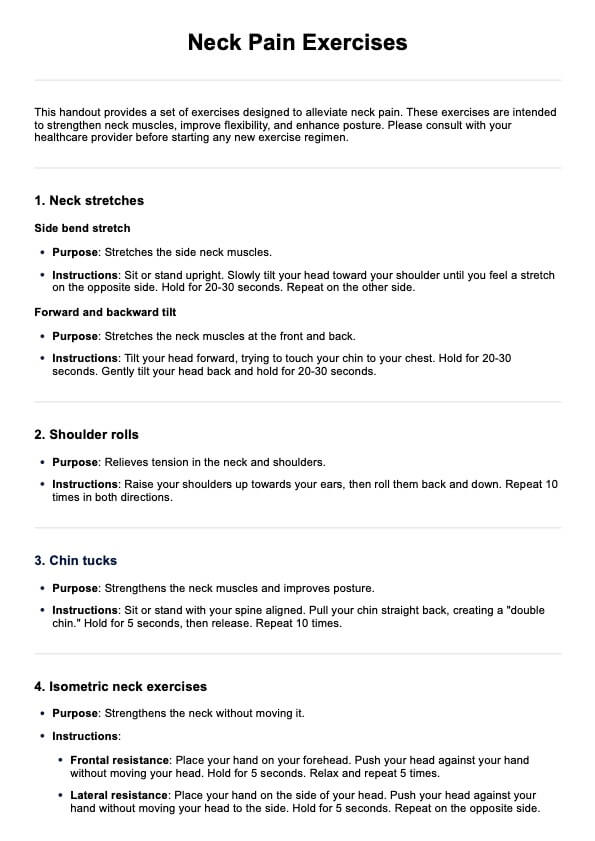A strained neck or one shoulder typically heals within a few days to a few weeks. Severe strains might take longer, up to several months.

Neck Pain Exercises
Explore effective neck pain exercises with our free PDF guide on stretches, strength exercises, and tips for daily practice.
Use Template
Neck Pain Exercises Template
Commonly asked questions
To reactivate neck muscles, gently stretch and strengthen neck exercises, such as neck and head tilts, rotations, and isometric exercises.
Poor posture, prolonged sitting, incorrect sleeping positions, and sudden movements that stretch and overextend the neck muscles are common causes of neck strain.
EHR and practice management software
Get started for free
*No credit card required
Free
$0/usd
Unlimited clients
Telehealth
1GB of storage
Client portal text
Automated billing and online payments











